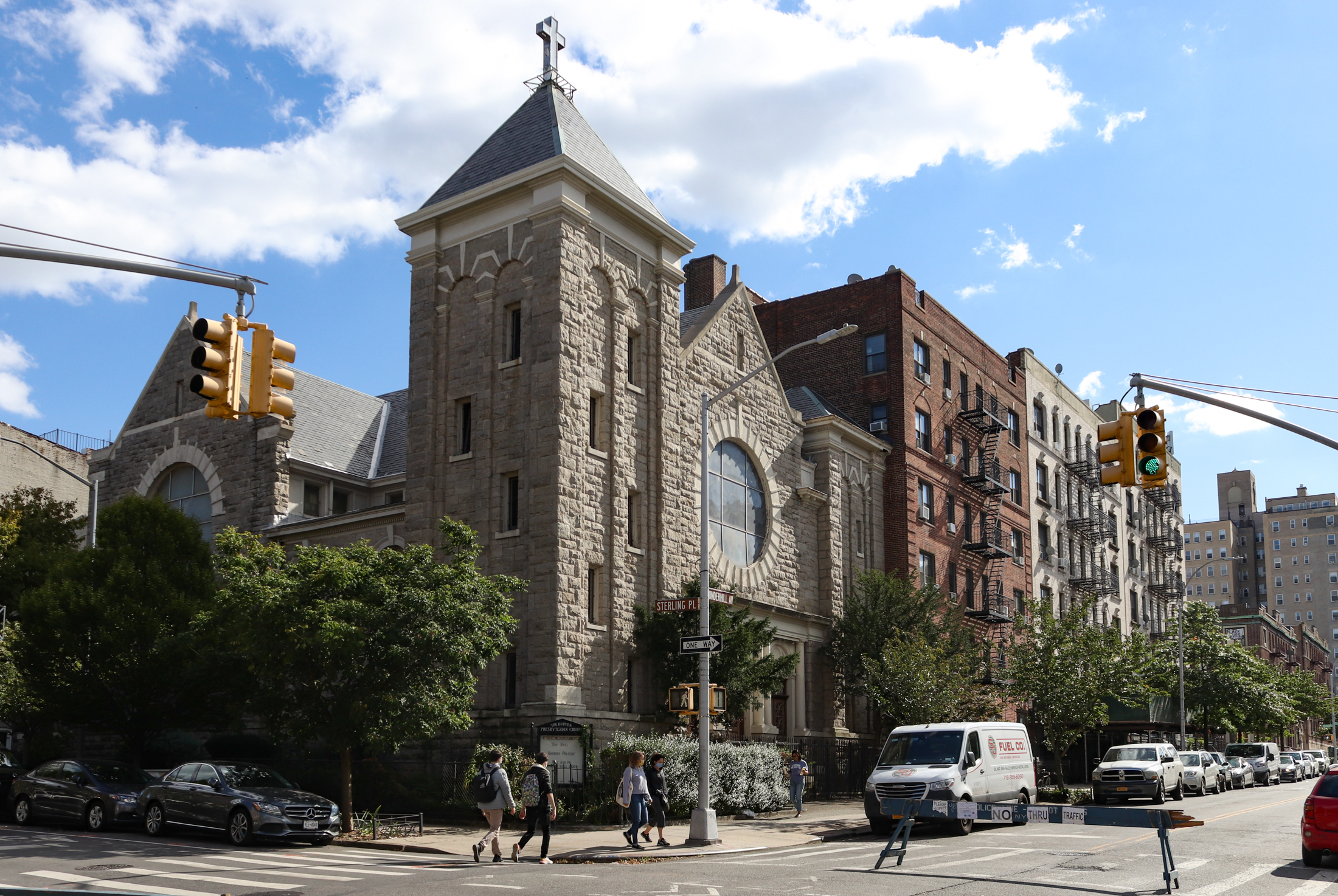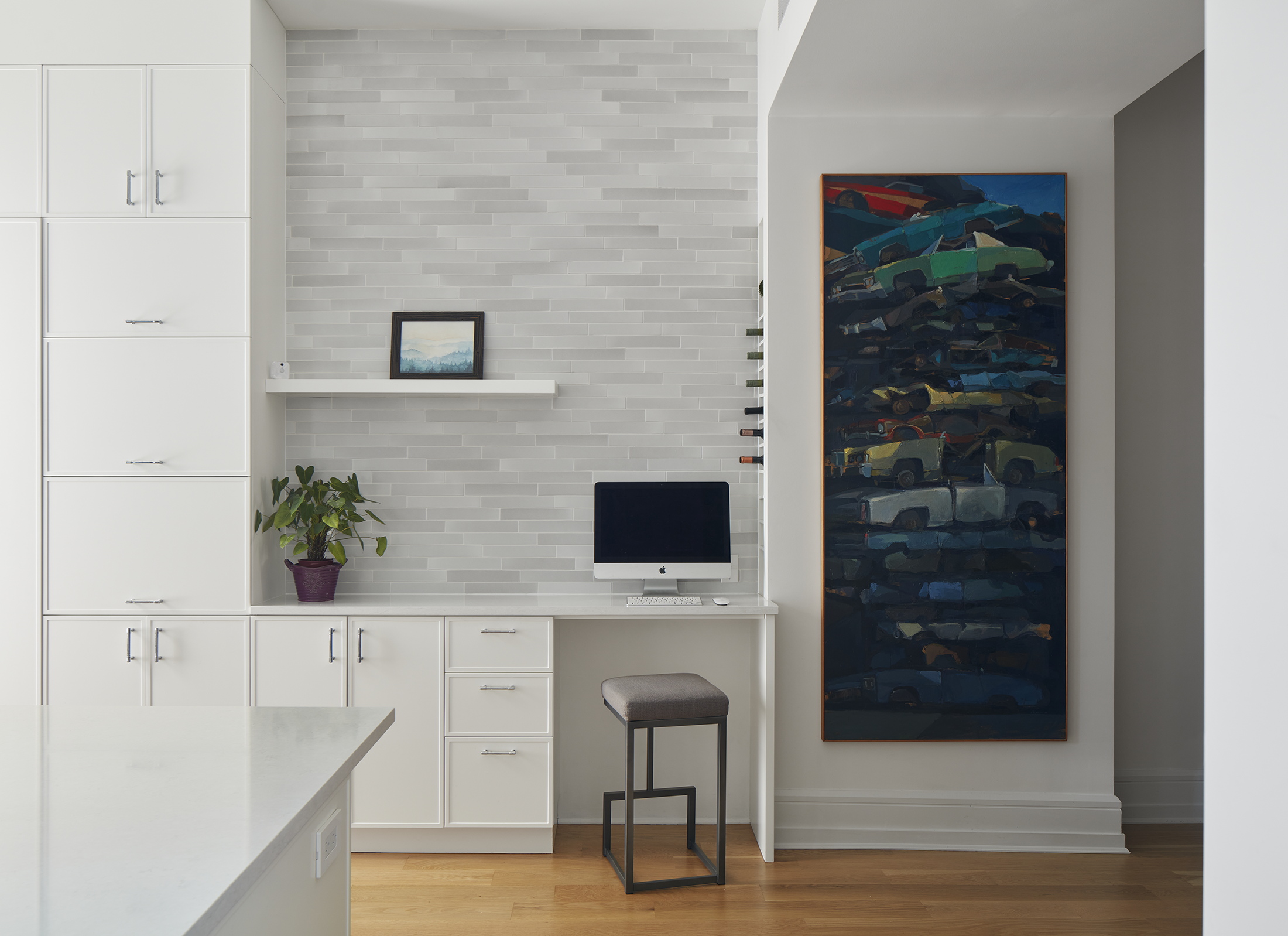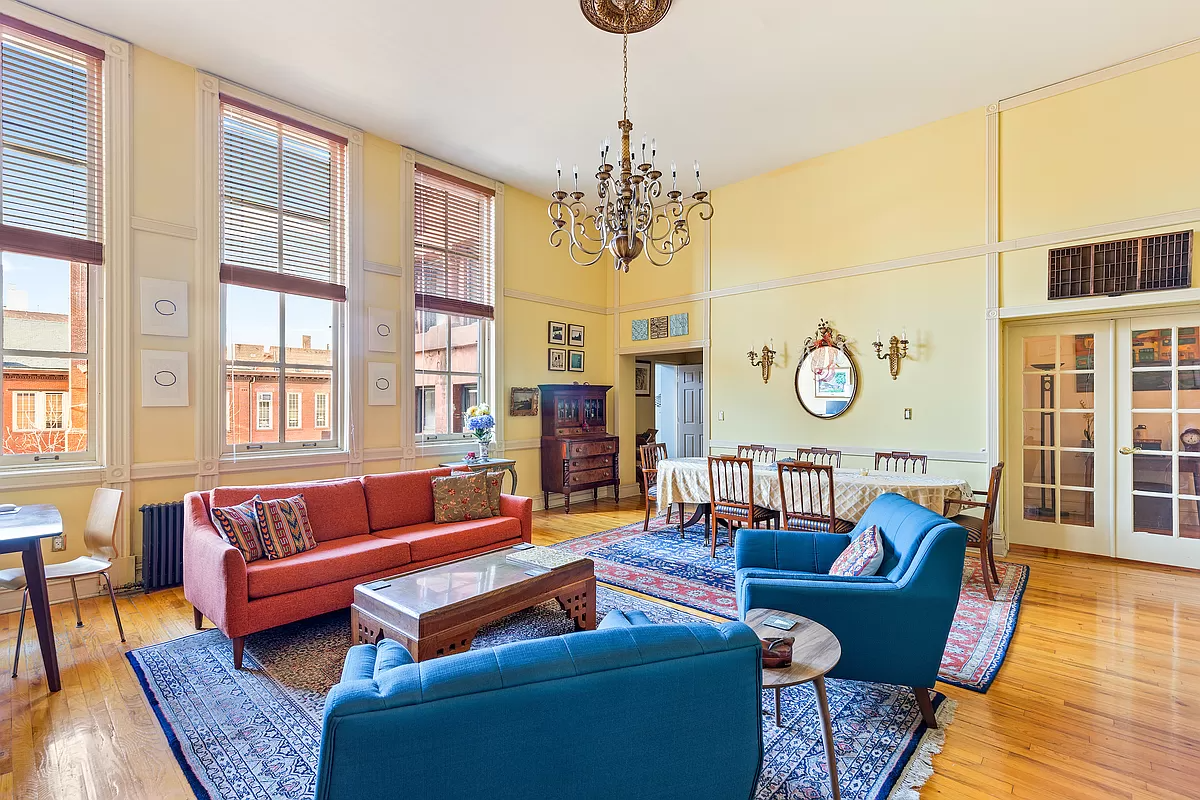Residential Sales in Brooklyn
PROSPECT HEIGHTS $669,000 35 Underhill Avenue GMAP 1,450-square-foot, 3-bedroom condo in a new building; dining room, high ceilings, washer/dryer, terrace, 2 exposures, gym in building; common charge $789; taxes $700 (abated); listed at $669,000. Broker: Aguayo & Huebener. Residential Sales [NY Times] BEDFORD STUYVESANT $980,000 100 Decatur Street GMAP Archive! Listing 4-story, 2-family brownstone original…

PROSPECT HEIGHTS $669,000
35 Underhill Avenue GMAP
1,450-square-foot, 3-bedroom condo in a new building; dining room, high ceilings, washer/dryer, terrace, 2 exposures, gym in building; common charge $789; taxes $700 (abated); listed at $669,000. Broker: Aguayo & Huebener.
Residential Sales [NY Times]
BEDFORD STUYVESANT $980,000
100 Decatur Street GMAP Archive! Listing
4-story, 2-family brownstone original hardwood floors, two decorative fireplaces, sliding pocket doors, original shutters, pier mirror, crown moldings and various built-ins. Listed at $899,000. Multiple offers. Broker: Corcoran.
100 Decatur Street [Property Shark]








Its summer. If a property didn’t move in the very busy spring market and the seller is serious then it’s time to cut prices.
Yes, Bedford Heights denotes the area just east of Clinton Hill and west of Stuyvesant Heights. I don’t find the name offensive. Both Stuyvesant Heights and Bedford Heights are still located in Bedford-Stuyvesant. The naming simply delineates the historic areas. I don’t see the problem and I’ve been living in the Stuy all of my life.
Historically the area that we call Bedford-Stuyvesant today was comprised of two villages: the Village of Bedford and the Village of Stuyvesant (also called Stuyvesant Village). Overtime the common reference to these two villages morphed in one to create NYC’s largest neighborhood Bedford-Stuyvesant. In the early 1970’s the LPC designated landmark status to the area surrounding Stuyvesant Avenue and called it “The Stuyvesant Heights Historic District”, in part reference to the areas former nomenclature of Stuyvesant Village. At the time, some area preservationist advocated for the additional naming and landmarking of the exclusive brownstone area east of Bedford Avenue as the “The Bedford Heights Historic District”, also in part reference to the area’s past history. However, this effort failed (for reasons unbeknownst to me) and the issue was never seriously considered again. Today, there appears to be a groundswell of wide support for landmarking this area of true architectural merit. The current reference of the prime brownstone area west of Stuyvesant Heights to the Clinton Hill border as Bedford Heights is a byproduct of two things: (1) the growing acknowledgement of the areas history; and (2) the growing fear that if left unprotected, the historical and architectural significance of this area will be threatened.
IMHO, expanding the current Stuyvesant Heights Historic District further north to Madison and landmarking the brownstone area just west of it “Bedford Heights” would go a long way in preserving some of the best examples of turn of the century architecture in this city.
Historically the area that we call Bedford-Stuyvesant today was comprised of two villages: the Village of Bedford and the Village of Stuyvesant (also called Stuyvesant Village). Overtime the common reference to these two villages morphed in one to create NYC’s largest neighborhood Bedford-Stuyvesant. In the early 1970’s the LPC designated landmark status to the area surrounding Stuyvesant Avenue and called it “The Stuyvesant Heights Historic District”, in part reference to the areas former nomenclature of Stuyvesant Village. At the time, some area preservationist advocated for the additional naming and landmarking of the exclusive brownstone area east of Bedford Avenue as the “The Bedford Heights Historic District”, also in part reference to the area’s past history. However, this effort failed (for reasons unbeknownst to me) and the issue was never seriously considered again. Today, there appears to be a groundswell of wide support for landmarking this area of true architectural merit. The current reference of the prime brownstone area west of Stuyvesant Heights to the Clinton Hill border as Bedford Heights is a byproduct of two things: (1) the growing acknowledgement of the areas history; and (2) the growing fear that if left unprotected, the historical and architectural significance of this area will be threatened.
IMHO, expanding the current Stuyvesant Heights Historic District further north to Madison and landmarking the brownstone area just west of it “Bedford Heights” would go a long way in preserving some of the best examples of turn of the century architecture in this city.
I think I live in this “Bedford Heights”. I guess it beats calling it Clinton Hill, but my neighbors would be like “WTF?” if I referred to my hood as anything other than “Bed Stuy”.
Is there a really a Bedford Heights? Corcoran’s site still has this as “in contract”
The buyers who lost out on the house shouldn’t fret, Bed-Stuy has so many awesome houses on truly great blocks (primarily in Stuyvesant and Bedford Heights) that another fantastic house will soon hit the market at a relatively affordable price. I recall missing out on a super spectacular house on Hancock in Bedford Heights for $925k in 2005 and thought that I missed the opportunity of a lifetime. I was depressed for weeks. However, six months later I was able to purchase a fabulous home in Stuyvesant Heights for under a mill and I couldn’t be any happier. Great house. Great block. Great neighbors.
Decatur was pretty special, I think several commentators for that HOTD topic predicted there would be competition.
I’m surprised the winning bidder didn’t go to 999k, seems to me the sure way to have secured it.
i agree wholeheartedly, 11:52. bed stuy is a great gem, and i’m proud to call it my (new) home.